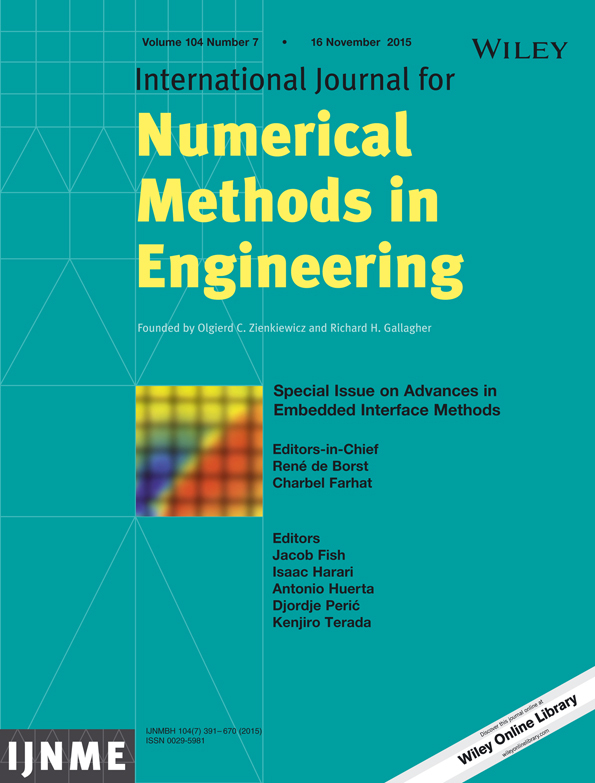An embedded mesh method using piecewise constant multipliers with stabilization: mathematical and numerical aspects
Summary
An embedded mesh method using piecewise constant multipliers originally proposed by Puso et al. (CMAME, 2012) is analyzed here to determine effects of the pressure stabilization term and small cut cells. The approach is implemented for transient dynamics using the central difference scheme for the time discretization. It is shown that the resulting equations of motion are a stable linear system with a condition number independent of mesh size. Next, it is shown that the constraints and the stabilization terms can be recast as non-proportional damping such that the time integration of the scheme is provably stable with a critical time step computed from the undamped equations of motion. Effects of small cuts are discussed throughout the presentation. A mesh study is conducted to evaluate the effects of the stabilization on the discretization error and conditioning and is used to recommend an optimal value for stabilization scaling parameter. Several nonlinear problems are also analyzed and compared with comparable conforming mesh results. Finally, several demanding problems highlighting the robustness of the proposed approach are shown. Copyright © 2014 John Wiley & Sons, Ltd.




